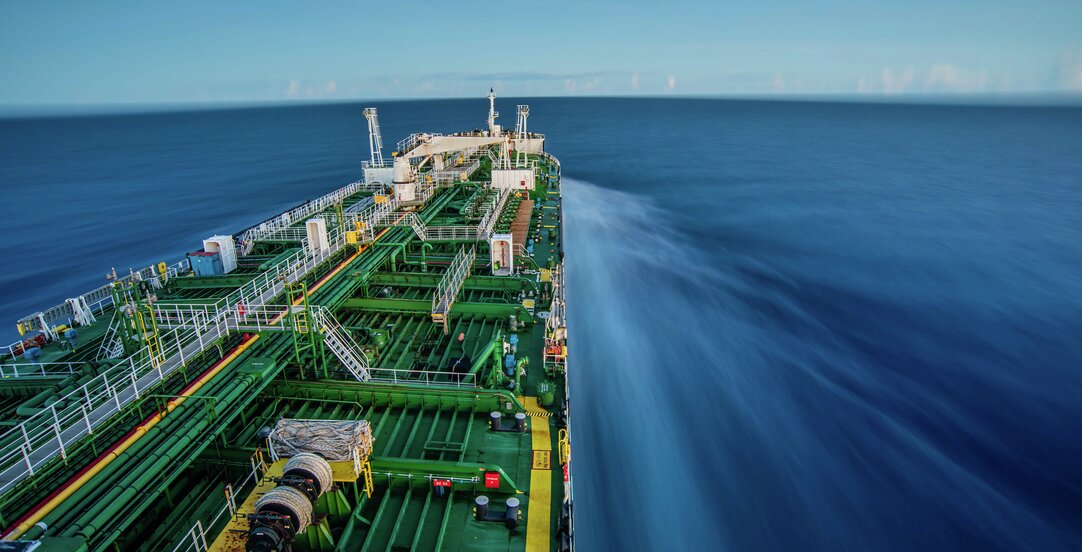Decarbonisation in shipping – the EU proposals

On 14 July 2021 the European Commission published its “Fit for 55” package setting out various legislative proposals to enable the EU to reach its objective to reduce emissions by at least 55% by 2030 (as compared to 1990 levels).
Reading time 4 minutes
The package includes proposals for a revised Emissions Trading System (ETS) directive (which until now has excluded the shipping industry) and a new FuelEU Maritime initiative, both of which will directly impact the shipping industry.
Inclusion of shipping – why now?
In 2018, the International Maritime Organization (IMO) adopted an initial greenhouse gas emissions strategy for international shipping, which, amongst other things, sought to reduce average carbon intensity (CO2 per tonne mile) by at least 40% by 2030 and by 70% by 2050, as well as cutting total greenhouse gas emissions from international shipping by at least 50% by 2050 (as compared to 2008).
Whilst the IMO’s emissions strategy represents real progress, it has nevertheless been criticised for not going far enough. Indeed in the “Fit for 55” proposal, the European Commission has said that “While the recent progress achieved in IMO is welcome, these measures are insufficient to decarbonise international shipping in line with international climate objectives”.
Accordingly, the EU has decided to take matters into their own hands and to expedite applying its own shipping standards as part of the European Green Deal.
The public law aspect
As currently drafted, the EU ETS and the FuelEU Maritime proposals hold shipping companies responsible for actions which take place both inside and outside of EU territory, including in international waters.
Applying such extraterritorial jurisdiction clearly requires a legal basis in international public law and even though the EU will argue that they have the required basis, either through port state jurisdiction or under customary principles of international law (e.g. the so-called “effects doctrine” which allows a state to exercise extraterritorial jurisdiction over matters that have a substantial impact on the state’s territory), it will not be surprising if certain members of the international community seek to challenge the proposals arguing that the EU is acting ultra vires i.e. outside of its powers.
Another possible critique the EU initiative may be subject to is that it challenges the established order – namely the generally held understanding that international shipping in international waters is regulated by the IMO and the United Nations Convention on the Law of the Sea (UNCLOS), which seek global cooperation and global rule development in order to secure uniformity and avoid unilateral approaches to regulate an international and global industry. Although the EU’s proposals note that the regulations will be “reviewed” if global resolutions on relevant matters are reached, the international legal aspects do not seem to have been considered, in detail, by the European Commission.
The effect of the “Fit for 55” package and the way forward
When viewed through a global lens, there are obvious disadvantages in introducing a scheme that places obligations on ships in the EU only. Having different burdens placed on shipowners and operators in different parts of the world may create uncertainty and lead to shipowners and operators seeking to avoid the EU scheme.
Given the pressing need for a global response to curbing greenhouse gas emissions however, it is to be hoped that the EU’s approach will be seen as a trailblazer that can provide an example for the rest of the world.
The “Fit for 55” package is at this point still only at the proposals stage and will have to be negotiated with the European Parliament and EU member states before it can be adopted and take effect. Although the proposed measures are subject to criticism and no doubt have room for improvement, it is safe to say that emissions from shipping will be subject to stricter
and more comprehensive legal obligations going forward.
EU Commission’s proposal as part of the “Fit for 55 package”
| EU ETS | FuelEU Maritime |
|
|
| EU ETS | FuelEU Maritime |
|
|
| EU ETS | FuelEU Maritime |
|
|
| EU ETS | FuelEU Maritime |
|
|
